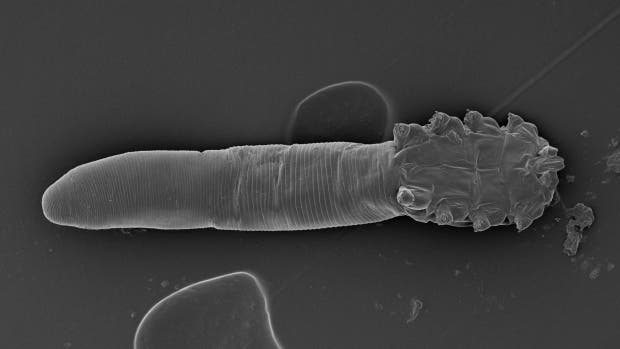Tiny eight legged creatures crawl on all our faces, a new study shows. In other words, if you’re an adult – you have face mites.

Face mites are parasitic/commensal creatures; when they are present in large numbers, they can cause an infestation called demodicosis. The mites are usually found in the human hair follicles, normally found in greater numbers around the cheeks, nose, eyebrows, eyelashes, and forehead. They could also be found in other parts of the body such as arms, chest, and ears. They vary in size from 0.1 mm to 0.4 mm long. Generally speaking, they are considered commensal organisms – they benefit from the host, but they don’t cause any harm to it.
Until recently, scientists believed that only a part of all humans have face mites. However, a new study (which you can read fully here) found that 100 per cent of 253 people over age 18 had mite DNA on their faces. This suggests that mites are general inhabitants of our faces. They also found that there are two species typically inhabiting our faces: Demodex brevis is the first one; it is perfectly adapted to bury itself in our sweat glands.
“It’s actually evolved the perfect shape to wiggle in the pores,” Kachur said.
The other one is called Demodex folliculorum and it inhabits the hair follicles of our eyelashes, eyebrows and facial skin.
This study shows just how complex our body’s ecosystems are. There are countless microorganisms living on (or inside) us, and we are just now starting to understand how we interact with them.
Another interesting facet of the study is that face mites can be used to track the migration of human populations. Since they are so ubiquitous and they can be genetically distinguished one from another, they could be used to trace how populations moved across time.
Journal Reference: Megan S. Thoemmes, Daniel J. Fergus, Julie Urban, Michelle Trautwein, Robert R. Dunn. Ubiquity and Diversity of Human-Associated Demodex Mites. Published: August 27, 2014DOI: 10.1371/journal.pone.0106265


